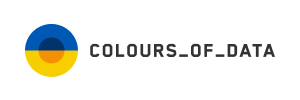In today's world, data spews at us from all directions, and it is critical for businesses to have a good grasp of their data. Data expert, Tomáš Mátl, a co-founder of the start-up company, Colours of Data, which operates between Prague and London, identified this issue some years ago.
"I used to be one of those frustrated business people in a big corporation where I was in charge of creating customer propositions. My bonus depended on how much the proposition ended up making. But, I didn't have a way to manage its performance, and although I knew where the required data was, I couldn't access it.” Tomáš Mátl recalls the time when he decided to leave the corporation and instead start on his own gradually tidying up data, so to speak, for many other companies.
As he says, today it is still common for many companies to operate on the principle of so-called data silos, i.e. they do not have interconnected databases and thus cannot obtain a comprehensive overview of what is happening in the business, or what the customer needs.
“Data-mature companies have removed their silos," explained Tomáš Mátl in an interview for Digibiz.cz who, for the second year in a row, is also helping to advance the role of women in data analytics and thus gain a foothold in company management structures across Europe via the European Women on Boards platform.




